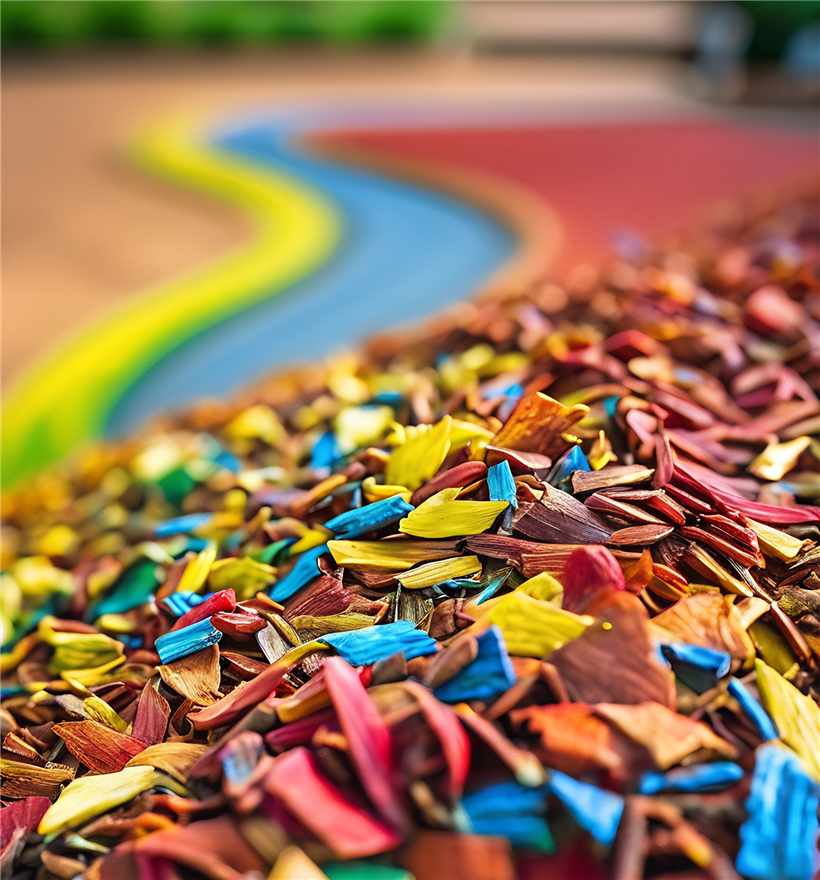Iron oxide pigments for wood mulch chips
In contrast to bark mulch, colored mulch is manufactured from selected wood chippings. The pale natural color of the coniferous wood chips can be transformed into brilliantly colored products using iron oxide pigment.
The coloring of wood chips can either take place during the shredding process when hammer shredders are used to form the chippings, or during the course of a mixing procedure. The possible color shades are red, yellow, brown and black with many color shades in between.
Iron oxide pigments are pure, synthetic iron oxides which, if properly used, are ecologically harmless. The product is classified as non-hazardous to water sources.. Since iron oxide occurs naturally, making up around five percent of the earth's crust, the application of colored mulch has a minimal impact on the natural composition of soil.
Colored mulch should be applied in a layer 4 - 10 cm thick. Under normal circumstances, a thickness of 5 cm is sufficient. The thicker the layer applied, the better the protection against weeds, water evaporation and fluctuations in temperature.
Although the bond between the pigment and the wood is purely mechanical, the pigment is anchored so firmly in the fibrous outer layer of the dry material that it doesn't wash out, even during periods of prolonged rainfall, when the garden is watered, or on exposure to frost or dew.
Iron oxide pigments are entirely colorfast. However, like all natural materials, even wood degrades with time. As the colorant is finely distributed on the surface of the wood, the initial stages of degradation - visible as graying - cannot be fully concealed. Over the course of time, the color of the mulch dulls. It can be freshened by raking the mulch layer. However, after two to three years, a layer of new mulch should be added to revive the color of the mulched areas.
Like earth, mulch can cause mechanical staining of, for example, clothing and footwear. Staining will be negligible in dry conditions. However, the risk will increase if the mulch has become wet. If colored mulch is used as a safety covering on children's play areas, it is possible that it will stain clothing. As a rule, stains can be removed by washing or dry cleaning.
Mulch can be applied throughout the year. Before mulch is applied, flower beds should be leveled, the soil loosened and weeds removed. If required, fertilizer can be applied to plants that are to be surrounded by colored mulch.
Colored mulch is, as its name implies, a mulching material. It is also an excellent decorative aid. As a mulching material, it can be used on any soil areas like flower beds, around the base of trees, parks, landscaped areas of industrial sites (corporate design), golf courses or leisure parks. Indoors it can be applied for shop window decoration or plant containers.
The wood chippings must be allowed to dry after coloring so that the process of anchoring the pigment particles in the wood can be completed. Depending on the moisture content of the colored mulch, it is advisable to consider the weather conditions before laying the mulch outdoors. Dry mulch can be layed when it is raining. However, if the mulch is wet, application should be delayed until the weather is dry.



